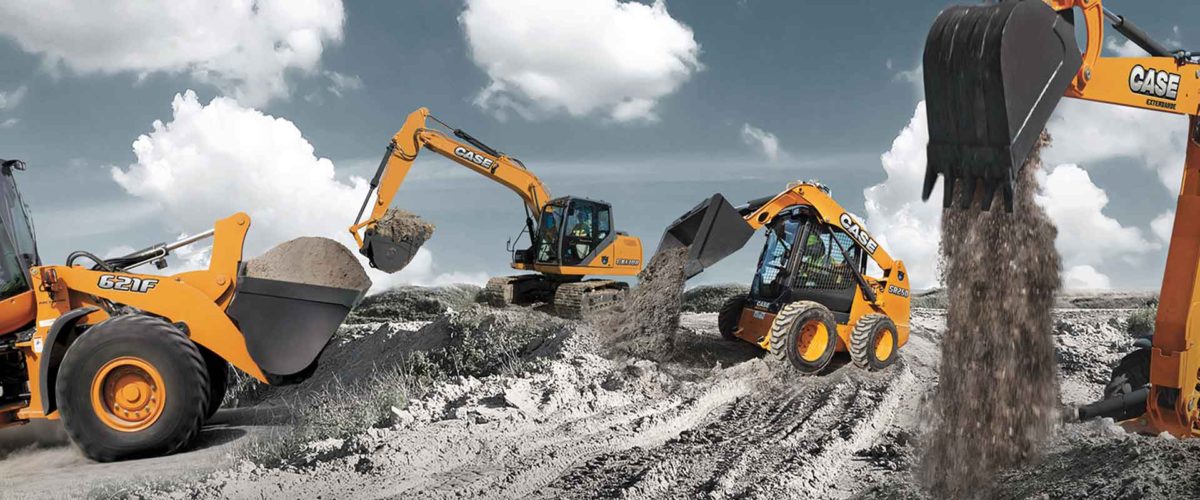Open Cost-Effective Solutions: Aftermarket Construction Parts for every single Task Demand
Open Cost-Effective Solutions: Aftermarket Construction Parts for every single Task Demand
Blog Article
Maximize Performance: The Advantages of Using Aftermarket Components for Heavy Equipment
In the realm of heavy equipment maintenance and optimization, the utilization of aftermarket components has become a strategic choice for numerous market experts. The choice to incorporate aftermarket components right into heavy equipment increases relevant inquiries around efficiency improvement, cost-effectiveness, and long-term functional efficiency. As sectors remain to seek means to boost the capability and longevity of their hefty devices, the discussion surrounding the benefits of aftermarket parts comes to be progressively compelling. By exploring the nuances of this different method to machinery upkeep, one can discover a world of possibilities that use greater than meets the eye.
Economical Remedy
An affordable strategy to keeping hefty machinery is by going with aftermarket components, which use an affordable remedy without endangering high quality. Aftermarket components are made by third-party companies as substitutes for initial tools supplier (OEM) parts. These parts are commonly much more budget-friendly than their OEM counterparts as a result of competitive prices and reduced brand name premiums. Despite their lower cost, aftermarket components go through rigorous screening to satisfy industry criteria and guarantee compatibility with various hefty machinery designs.
Wide Variety of Options

Additionally, the accessibility of aftermarket components from multiple suppliers and manufacturers produces an open market that drives development and quality renovation - aftermarket construction parts. This competition advantages companies by offering them access to technically innovative parts that might not be offered from initial tools manufacturers (OEMs) By having a vast array of aftermarket alternatives to pick from, services can optimize the performance, efficiency, and longevity of their heavy machinery while keeping expenses in control
Improved Efficiency and Efficiency
Enhancing hefty machinery performance and efficiency with the use of aftermarket components is a tactical technique that lots of organizations are increasingly embracing. By including aftermarket parts specifically created for heavy machinery, business can considerably improve the total performance and productivity of their tools. Aftermarket components often offer advanced modern technology and boosted products compared to initial devices producer (OEM) parts, leading to enhanced efficiency degrees.
One secret facet of aftermarket components adding to enhanced efficiency is their capacity to resolve details issues or weaknesses in the initial machinery layout. This targeted technique can result in much better overall performance, lowered downtime, and boosted functional efficiency. Furthermore, aftermarket components are often engineered to give better longevity and longevity, additional boosting the machinery's performance over a prolonged duration.
Additionally, aftermarket components can aid optimize the machinery's fuel more intake, bring about set you back savings and ecological advantages. By fine-tuning the equipment's components, organizations can achieve higher levels of effectiveness, converting into enhanced profitability and sustainability in the long run. Finally, leveraging aftermarket components to Source improve hefty machinery efficiency and performance can supply an affordable edge in today's demanding commercial landscape.
Raised Customization Possibilities
Building upon the enhanced performance and performance achieved with aftermarket components, heavy equipment drivers can currently discover increased customization possibilities to additional enhance their equipment. By incorporating aftermarket components that cater to specific needs, drivers can adjust their equipment to perform tasks much more effectively and effectively. In addition, aftermarket components use the versatility to readjust different elements of the equipment, such as hydraulic systems, controls, and safety features, allowing for an individualized method to devices optimization.
Extended Equipment Life Expectancy
Expanding the lifespan of heavy machinery is a crucial aspect in making best use of operational efficiency and reducing overall maintenance costs. By using aftermarket parts particularly designed for heavy equipment, devices owners can dramatically lengthen the life of their makers. Aftermarket components are typically engineered with premium materials and accuracy, making certain toughness and integrity. These components can boost the efficiency of heavy machinery, causing smoother procedures and decreased damage on crucial elements.
Aftermarket parts use a cost-effective remedy compared to original devices supplier (OEM) parts, enabling devices proprietors to keep their devices at a reduced price without compromising high quality. In addition, the accessibility of a wide variety of aftermarket components makes it easier to find appropriate substitutes for numerous equipment versions and brands, even more sustaining the long life of hefty equipment.
Verdict
In conclusion, using aftermarket parts for heavy equipment uses a cost-effective remedy with a wide variety of choices that can improve performance and effectiveness. These components also enable for increased customization possibilities and can add to expanding the lifespan of the machinery. Overall, including aftermarket components into heavy machinery maintenance and repair service strategies can maximize efficiency and enhance operational results.
Aftermarket parts are produced by third-party companies as substitutes for original equipment maker (OEM) parts. In addition, aftermarket parts come in various cost features, varieties, and high qualities, enabling services to choose the components that ideal match their budget and performance demands.
Aftermarket components often supply innovative technology and boosted materials compared to original devices producer (OEM) components, leading to enhanced efficiency levels.

Report this page